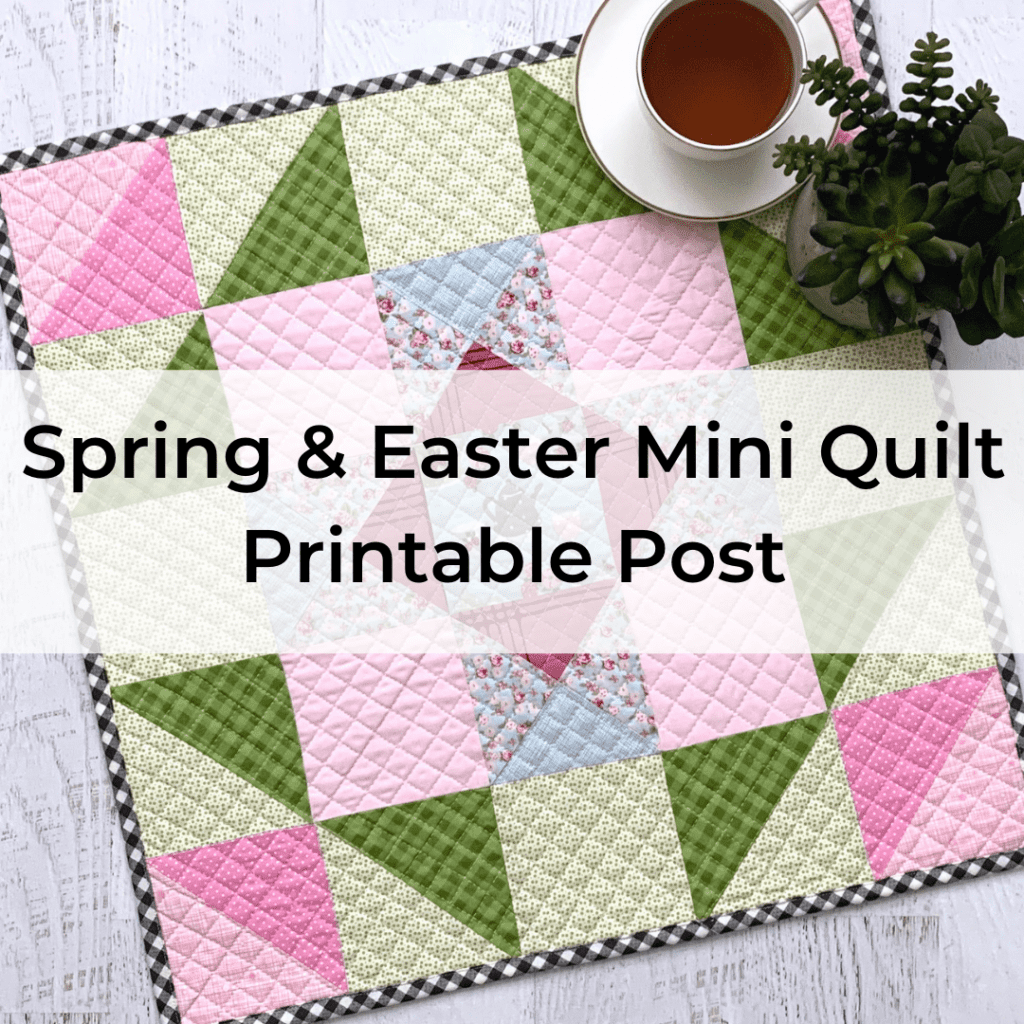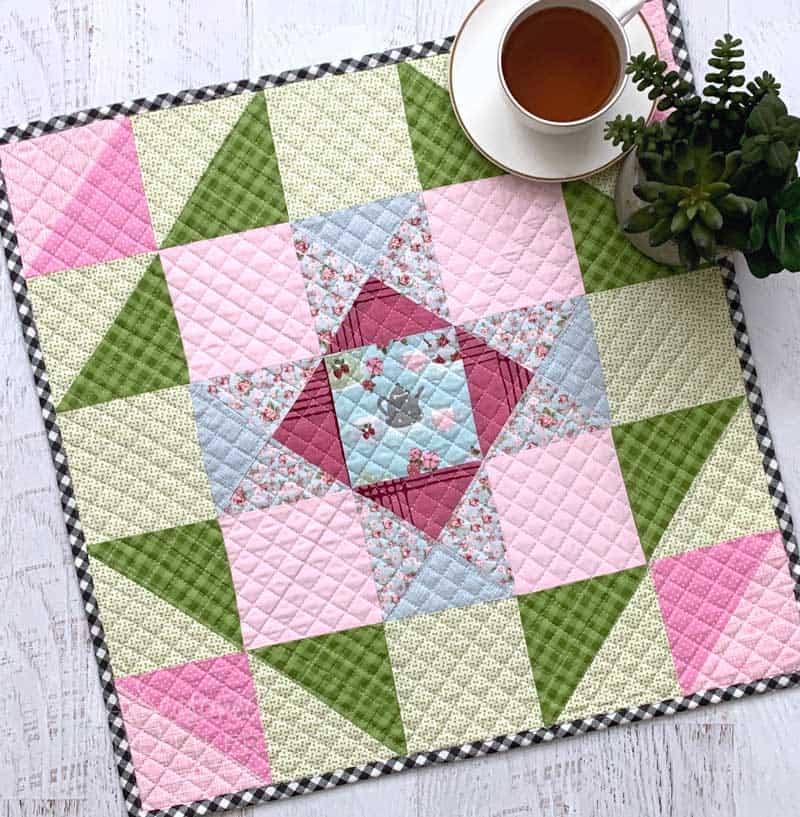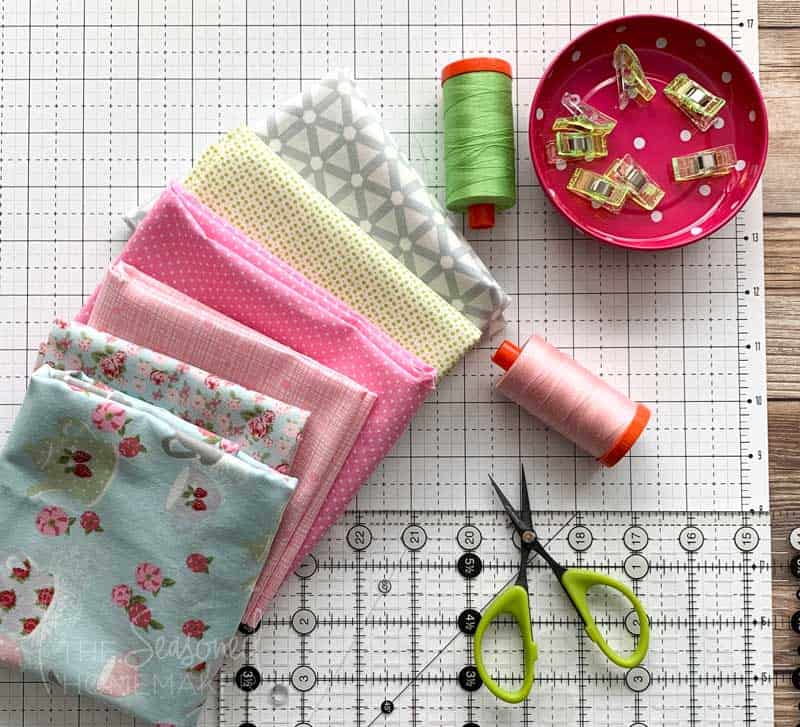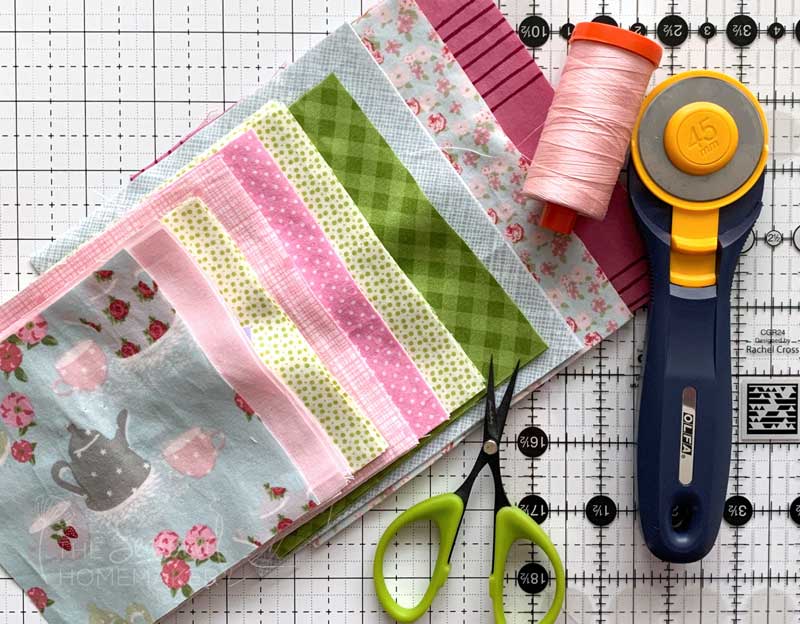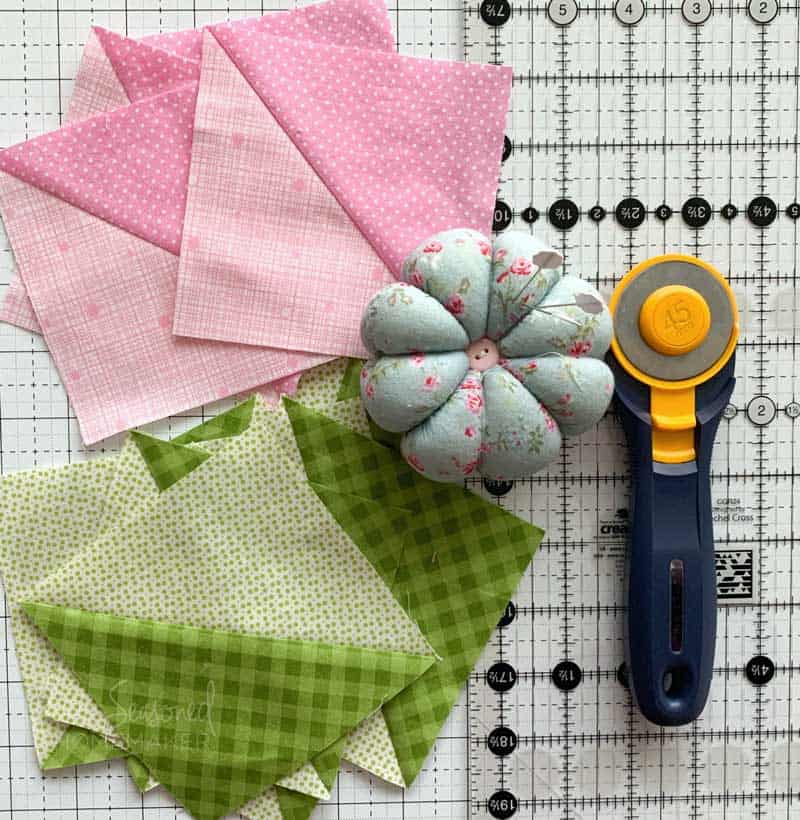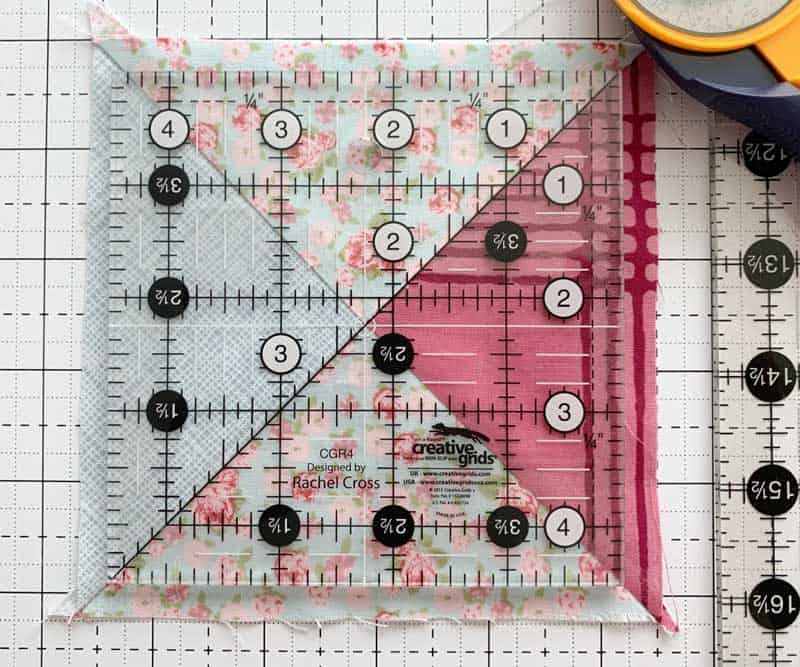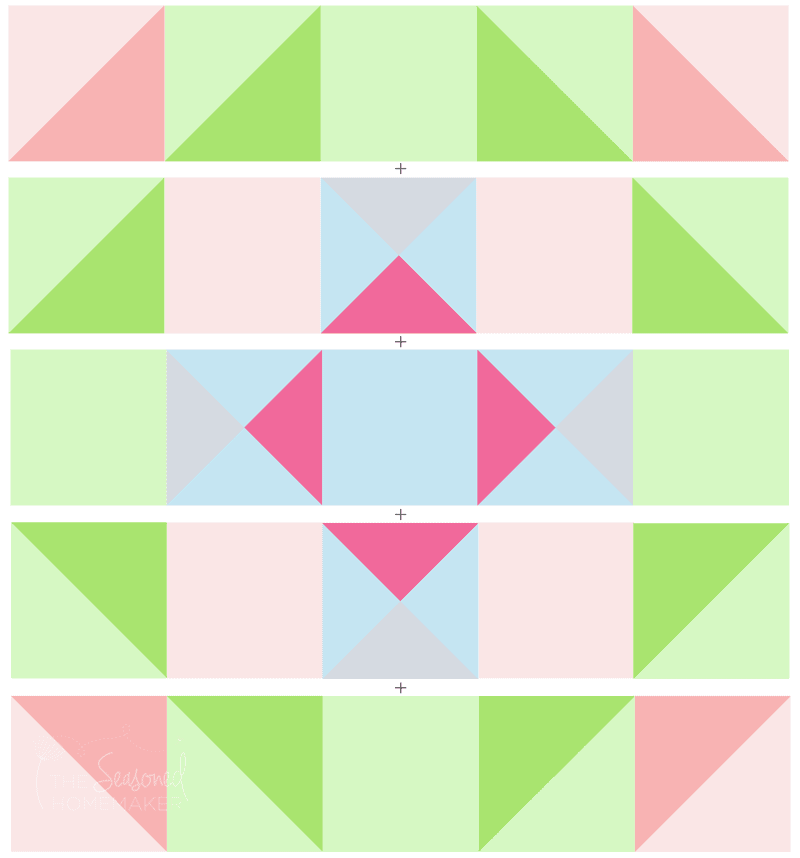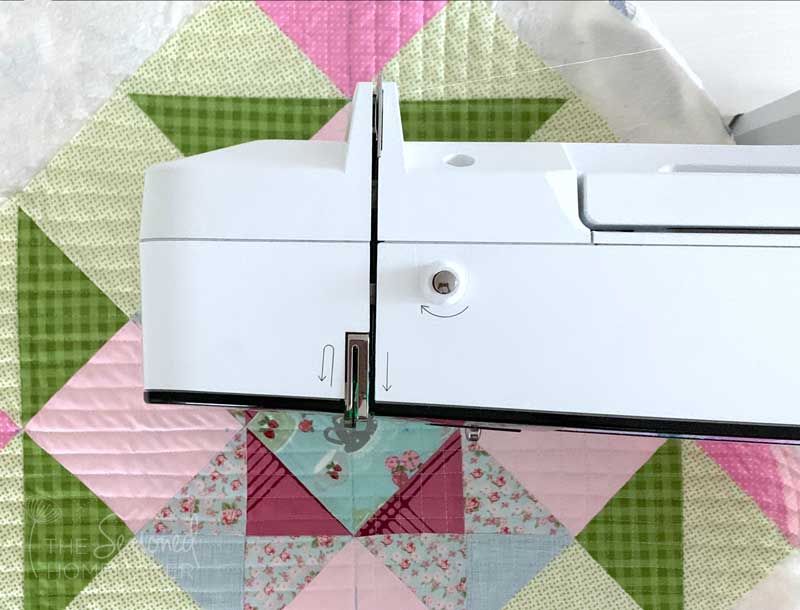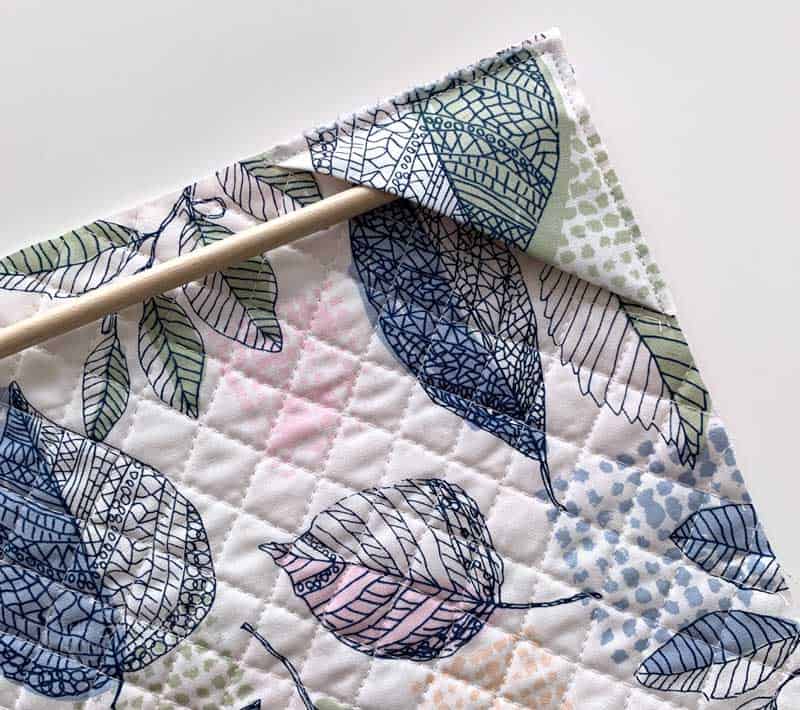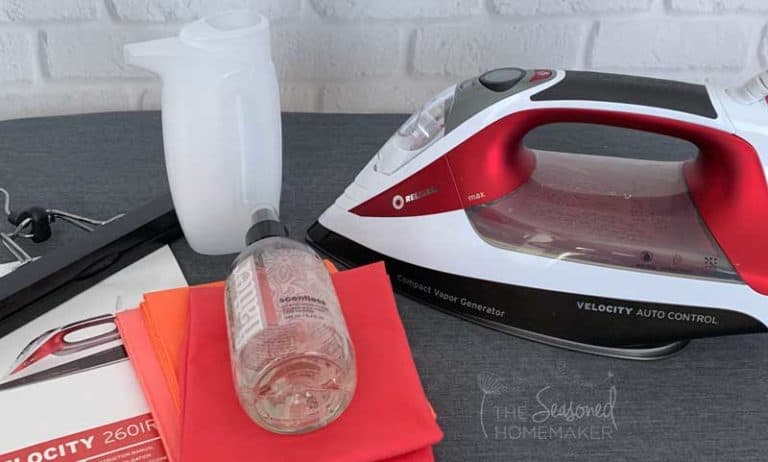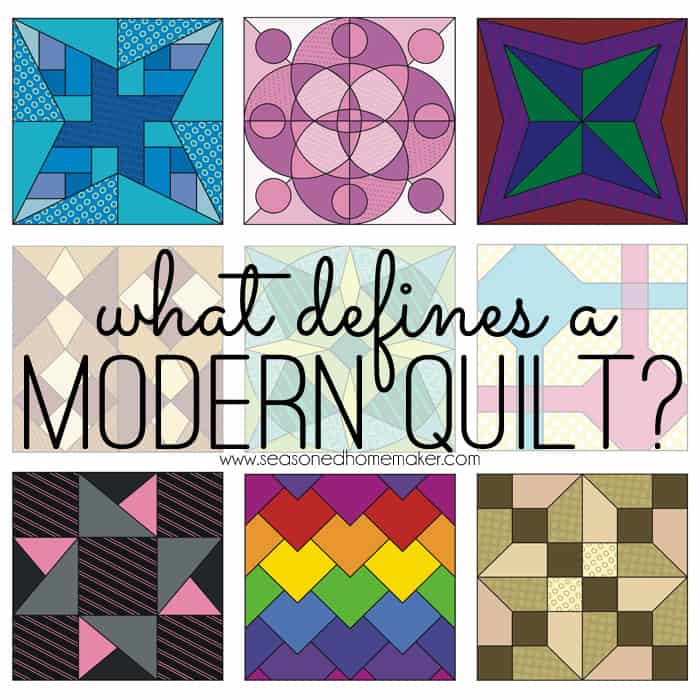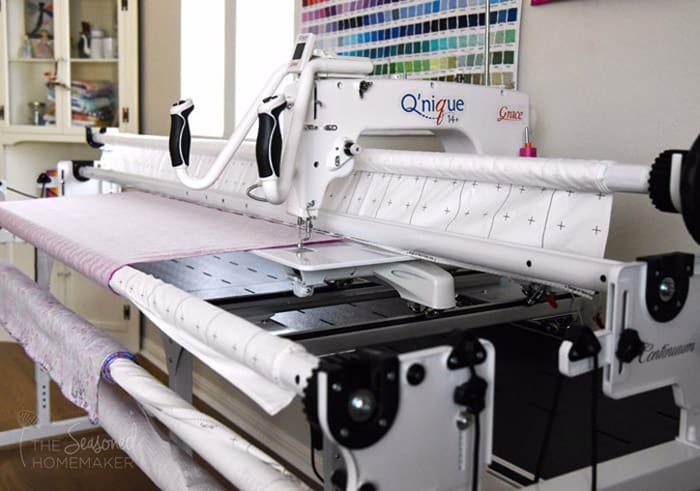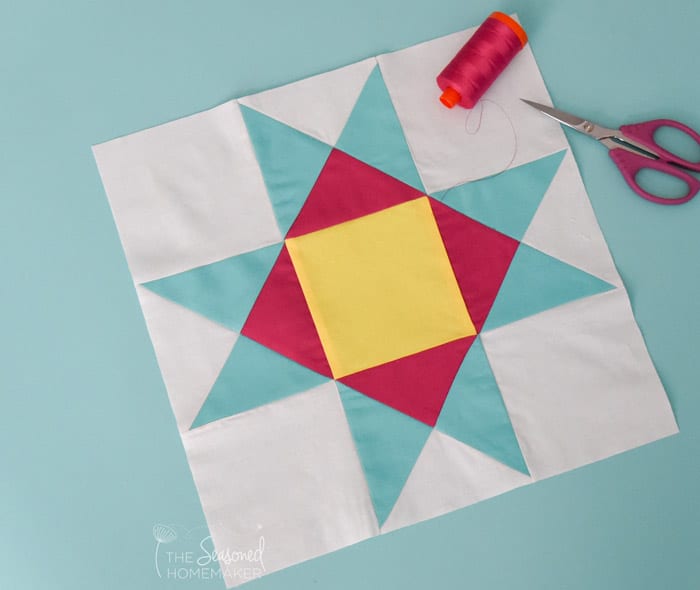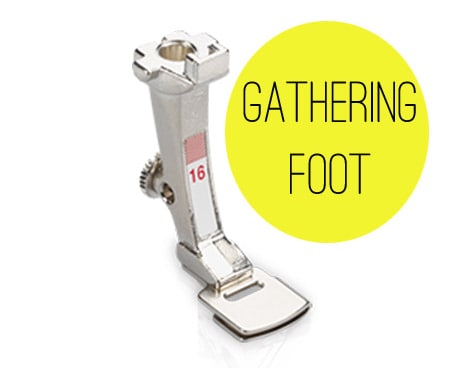Simple Spring & Easter Mini Quilt
This post may contain affiliate links which won’t change your price but will share a commission.
Inside: Simple Spring & Easter Mini Quilt
Are you ready to sew something fun for the Spring? The Simple Spring & Easter Mini Quilt is the perfect project to get you ready for the change of season.
It’s the perfect size for a table topper or would make a nice wall hanging.
You’re going to love the simplicity of this project because it’s just squares, half square triangles, and quarter square triangles. Easy, peasy.
Want an ad-free, printable copy of this tutorial? Scroll to the bottom of this post for more details!
How to Make a Simple Spring & Easter Mini Quilt
Materials:
This design works great for scraps. I have recommended fabric yardage below in case you want to start from scratch. If you have leftover fat quarters or 10″ squares, these will work, too.
Note: The reason for many of the 1/4 yard recommendations is because 1/8 yard is under 4.5″ and you will need 5″ for several blocks. Using fat quarters could make better use of your fabric.
- 1/4 yard – Light Pink Fabric
- 1/4 yard – Light Green Fabric
- 1/4 yard – Light Gray Fabric
- 1/4 yard – Medium Blue Fabric
- 1/4 yard – Medium Green Fabric
- 1/4 yard – Medium Pink Fabric
- 1/4 yard – Dark Pink Fabric
- 1/4 yard – Binding Fabric (feel free to choose any color)
- Quilt Backing Fabric: a scrap approximately 24” x 24”
- Fusible Batting: 24” x 24”
Supplies
- Sewing Machine
- Quarter Inch foot for your sewing machine
- Aurifil 50 wt. Cotton Thread
- Water-Erasable Pen
- Wonder Clips
- Sewing Pins
- Rotary Cutter with sharp blade
- Acrylic Ruler
- Self-Healing Rotary Cutting Mat
- Iron & Ironing Board
- 4.5″ Square Ruler
- Wool Pressing Mat
Cutting Instructions
- Cut (2) 5” x 5” Light Pink Squares (A)
- Cut (4) 4.5” x 4.5” Light Pink Squares (B)
- Cut (2) 5” x 5” Medium Pink Squares (C)
- Cut (4) 5” x 5” Light Green Squares (D)
- Cut (4) 4.5” x 4.5” Light Green Squares (E)
- Cut (4) 5” x 5” Medium Green Squares (F)
- Cut (1) 5.75” x 5.75” Light Gray Squares (G)
- Cut (2) 5.75″ x 5.75″ Medium Blue Squares (H)
- Cut (1) 5.75″ x 5.75″ Dark Pink Squares (I)
- Cut (1) 4.5″ x 4.5″ Medium Blue Square (center) (J)
- Cut (2-3) 2.25” x 40” (WOF) Binding Strips (K)
Step 1: Make Half Square Triangles (HST) 2-at-a-Time
- Make (2) Pink (A + C) HST sets.
- Make (4) Green (D + F) HST sets.
For detailed information on making HSTs see: How to Make Easy Half Square Triangles.
Follow the diagram below to make the HSTs.
- Place a light and a dark fabric square right sides together.
- Use a pencil or water soluble marker, draw a diagonal line from one corner to the opposite corner.
- On both sides of the diagonal line, stitch a scant 1/4″ seam. See How to Sew the Perfect Quilting Seam Allowance for more details.
- Using a quilter’s ruler and rotary cutter, cut along the pencil line.
- Press each completed HST, trim away dog ears, and square individual blocks to 4.5″.
Pro Tip: Want perfectly pressed HSTs? Use a Wool Pressing Mat when ironing your seams. The mat will make them lay much flatter.

Step 2: Make Quarter Square Triangles (QST) 2-at-a-Time
- Make (1) Gray (G) and Medium Blue (H) HST, but don’t trim down.
- Make (1) Medium Blue (H) and Dark Pink (I) HST, but don’t trim down.
Notice the tiny bullseye in the center of the ruler!
Follow the diagram below to turn HSTs into QSTs.
- Arrange your HST squares in correct layout (pictured below). Place opposite sides on top of each other. Be sure the seams line up. Secure with a pin. Hint: PLACEMENT MATTERS! Before sewing, fold back the fabric on one of the stitching lines. You should see an hourglass shape.
- Use a pencil or water soluble marker, draw a diagonal line from one corner to the opposite corner, bisecting the seam.
- On both sides of the diagonal line, stitch a scant 1/4″ seam.
- Using a quilter’s ruler and rotary cutter, cut along the pencil line.
- Press each completed QST, trim away dog ears, and square individual blocks to 4.5″.
Pro Tip: Using a 4.5″ square ruler will give you the most accurate blocks.

Step 3: Assembling the Quilt Top
It’s time to assemble the quilt top – one row at a time. Use the diagram below and lay out your quilt top.
- Be sure to start at the the top row for assembling.
- Lay out the quilt top one row at a time.
- Set your stitch length to 1.5mm – 2mm.
- Use a scant 1/4″ seam allowance and stitch the squares together in the order shown below.
- Once a row is complete, press all of the seams in one direction, alternating the direction every other row. Use a wool pressing mat if available.
Step 4: Connecting the Rows
- Layout each of the rows in the order according to the diagram below.
- Set your stitch length to 1.5mm – 2mm to allow for pressing the seams open.
- When placing rows together, be sure to nest the seams. This will insure your points match. Clip or pin to hold.
- Use a scant 1/4″ seam allowance and stitch the rows together in the order shown below.
- Once a row is complete, press all of the seams open. Use a wool pressing mat if available.
- Spray starch the top of your quilt (if desired) and press one more time.
Step 5: Quilting & Squaring
- Make a quilt sandwich by laying the quilt back fabric right side down. Next, place a piece of fusible batting on top. Then place the quilt top wrong side down on top of the batting.
- Press the quilt sandwich with a hot, dry iron for 10 seconds to set the fusible batting.
- Quilt in your favorite style. This can be as simple as you want with straight line quilting or an all-over meander. For my sample quilt, I used a diagonal grid spaced 3/4″ apart.
Since this is a mini-quilt, it’s a good opportunity to try something fun.
Note: If doing a grid, I recommend using an Open Toe foot with a guide.
Step 6: Finishing the Quilt
Optional Hanging Corners
(Optional Step) At this point you may want to consider adding optional hanging corners to the back of your quilt.
If you’re making a wall hanging, hanging corners allow you to slip in a small dowel for hanging.
To do this, fold two 4″ fabric squares right sides together in half to form two triangles. With raw edges matching, pin the triangles to the top left and top right corners. Using a 1/8” seam allowance, stitch to hold in place until binding is added.
Binding the Quilt
The final step is to bind your quilt. If you’re new to quilting, check out my tutorial below. There is also a quick video within the post that shows the process.
>>>Click here for a tutorial on How to Machine Bind a Quilt
Once finished, your mini quilt will be 20″ x 20″ – the perfect size for a table topper or wall hanging.
Wasn’t that easy. Now, set your Spring & Easter Mini Quilt in the middle of your table and enjoy!
>>> Want a printable version of the post? Click the pink button, and download the Printable PDF instructions.
